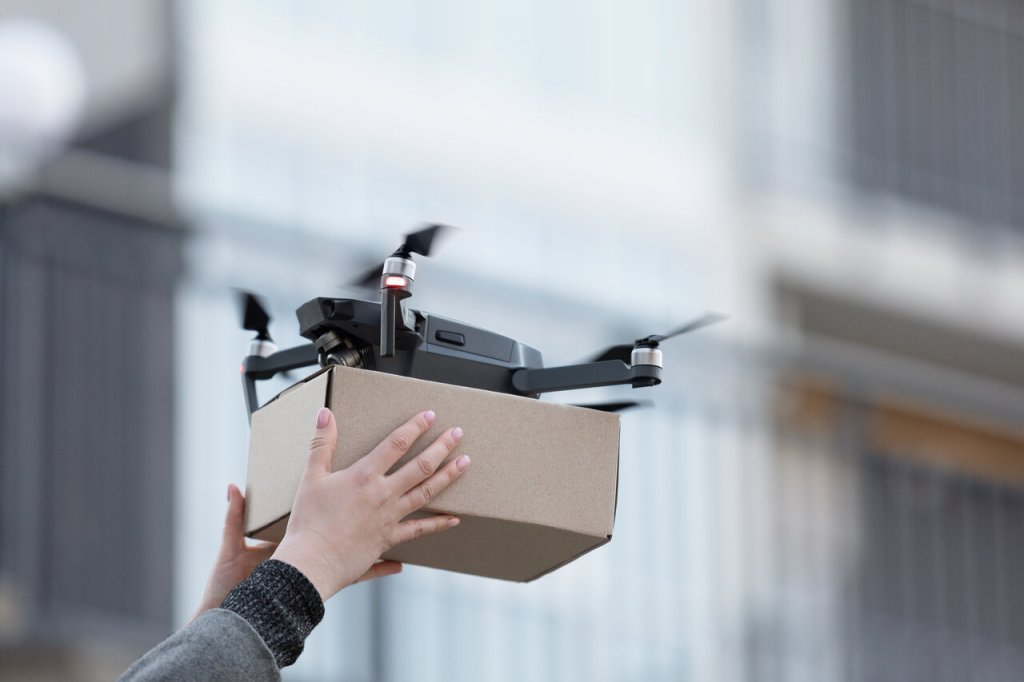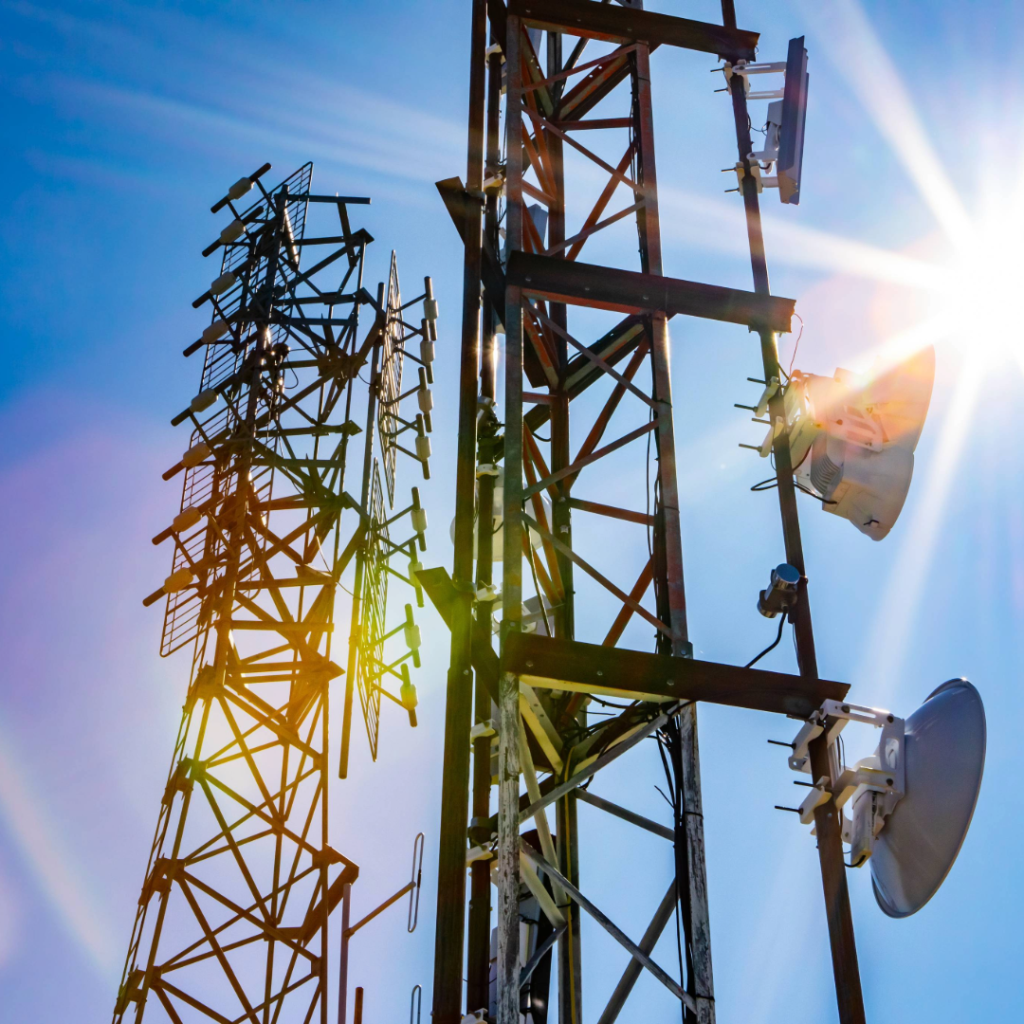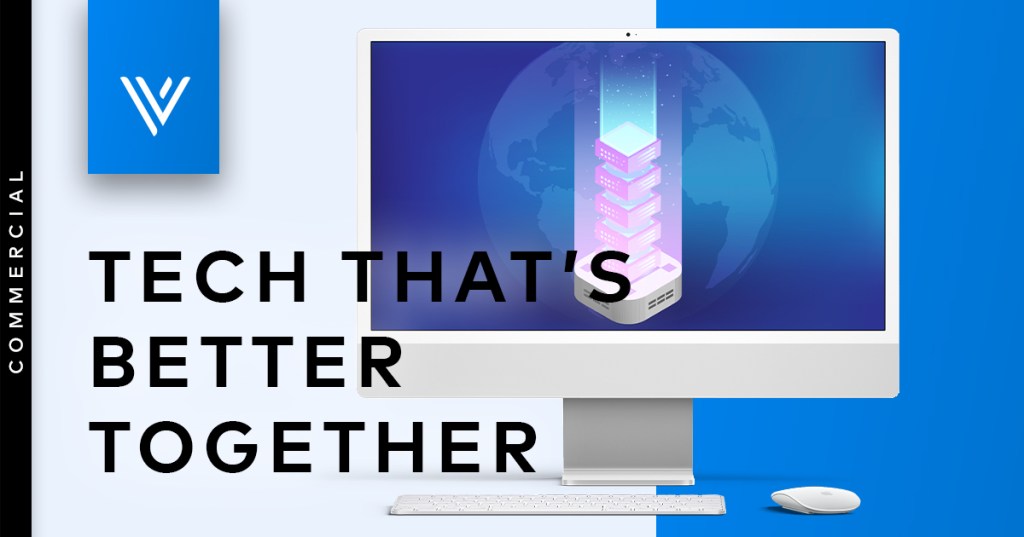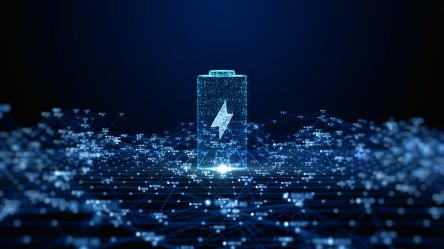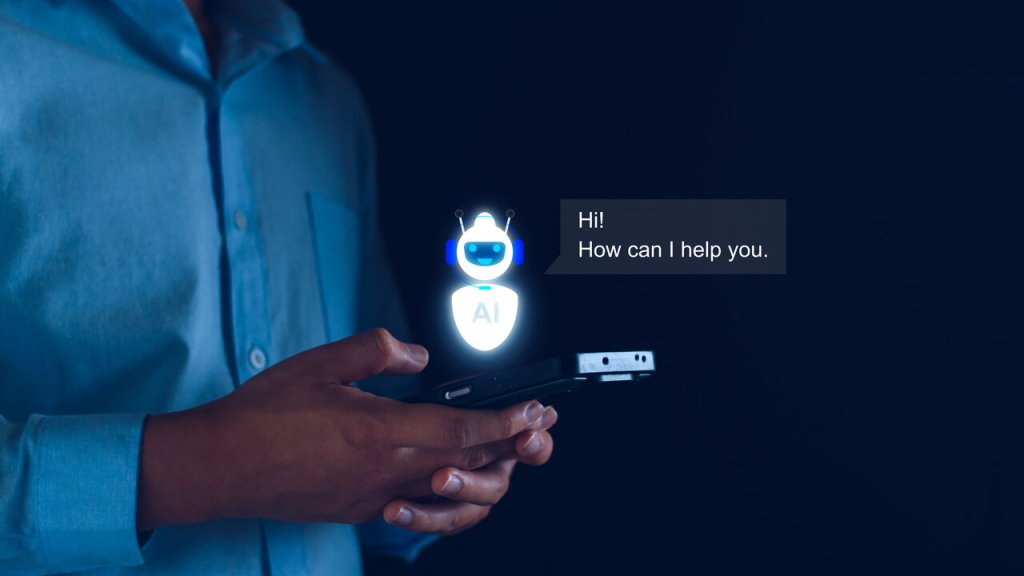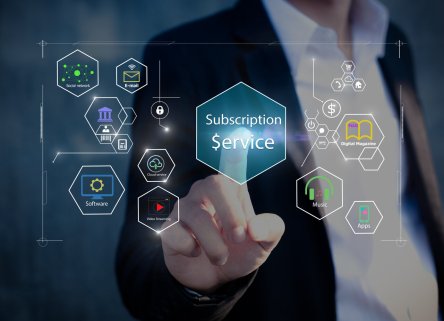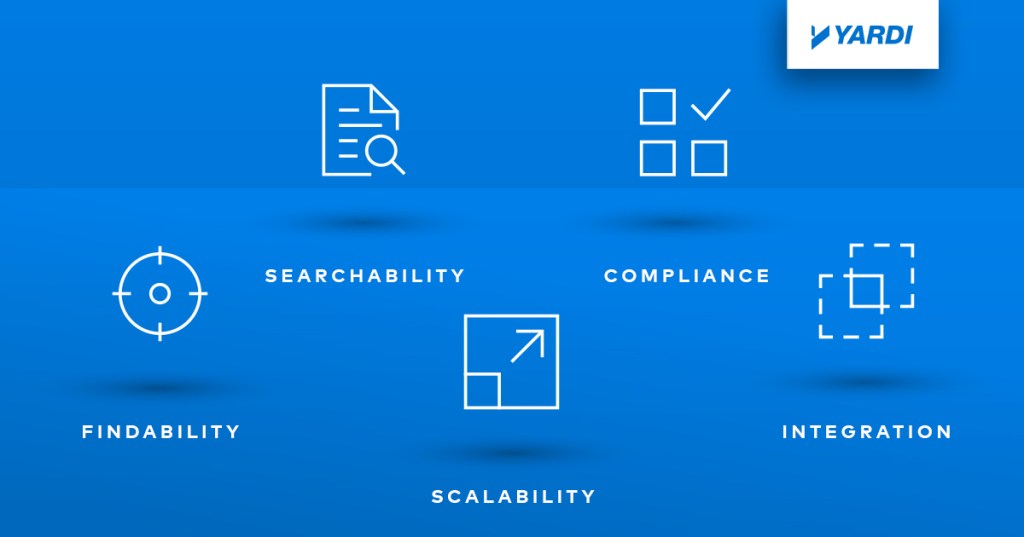Nine years ago, an article in this space asserted that deliveries of products to customers using drones might be “just around the corner.” Google, Amazon and Walmart were among the major retailers developing unmanned aerial vehicle fleets; an Amazon vice president predicted that, pending resolution of various regulatory and technology issues, drone deliveries would become “as normal as seeing a delivering truck driving down the street.” Has the vision articulated in 2016 come to pass? Statistics indicate that drones are indeed becoming more commonly used for delivering products to homes or other locations. PwC estimates that about 5 million business-to-consumer drone deliveries occurred worldwide in 2024. The global drone delivery market, valued at $530 billion in 2022, is expected to grow more than 42% annually between 2023 to 2030, with the U.S. share estimated to reach $830 million this year. “I think after what has been about a decade of a slow start, drone delivery seems to be accelerating both in its technological capabilities as well as the policy and regulatory environment in the United States,” Costa Samaras, director of Carnegie Mellon University’s Scott Institute for Energy Innovation, told NBC News last year. In 2023, for the first time, the FAA authorized commercial drone operators to fly their aircraft long distances without visual spotters in the line of sight. Drones can deliver a range of products, from prepared meals and groceries to medicines and retail items, while avoiding traffic congestion that traditional delivery vehicles must cope with. They also generate fewer emissions than road vehicles, can reach remote or hard-to-access locations, and are useful for such ancillary applications as surveillance, agriculture, aerial photography and environmental monitoring. Concerns surrounding drones include potential job losses for delivery workers, privacy issues, neighborhood noise and the potential for misuse by malicious actors. Growth of the drone delivery market will continue to be driven by such factors as increasing consumer demand for fast delivery, the desire to reduce carbon emissions and advancements in drone technology. “With the increased demand for drone delivery services globally, various countries are implementing favorable policies to support the operation of drones in their airspace,” says Mordor Intelligence, a business market intelligence and advisory firm in Hyderabad,...
Wireless Power Transfer...
Opens New Possibilities
Wireless power transfer, or WPT, uses electromagnetic waves to transmit electrical energy from a power source to an electrical device without physical connectors or wires. By eliminating the need for traditional power cables for a charging pad, this technology provides a convenient and efficient way to charge devices. And as it becomes more mature, its utility could expand beyond smaller appliances such as smartphones, earbuds and wearable devices to televisions, water heaters and other large appliances. “WPT has great potential to revolutionize the way people charge and has aroused great interest in academia and industry,” says the Association for Smarter Homes & Buildings, an international not-for-profit industry group for connected home and intelligent building technologies. “Integrating WPT into buildings and various household appliances can greatly improve the reliability, convenience and safety of power supplies in our lives.” WPT’s advantages eliminated cable plugging and unplugging; the ability to complete transfers through wood, glass and other materials; reduced exposure of wires and connectors to water and other corrosive elements; and no need for battery replacements on various IoT devices. “Wireless power is already making us rethink our societal and business infrastructures. [It is] one investment that doesn’t follow the law of diminishing returns. The more devices that have wireless power capabilities, the more value we have,” asserts Informa TechTarget, a Boston-area technology services provider. Limitations of WPT include generally slower and less efficient power transfers than traditional wired charging, with some energy being lost as heat during the process; limited range between the device and its power source; high implementation costs; and less efficiency for electric vehicles and other applications that require high energy transfer rates. Wireless power transfer is not designed for high-speed data transmission, which is normally the realm of Wi-Fi, Bluetooth and cellular...
High Value
Drones Boosting Real Estate
Some real estate professionals are using drone technology to gain a competitive edge. Drones, which are unmanned aerial vehicles equipped with high-resolution still and video cameras, can give potential buyers or investors a comprehensive view of a property and its surroundings. This constitutes “a unique perspective that traditional ground-based photography cannot [offer], providing comprehensive and engaging visuals that can significantly enhance real estate marketing efforts,” says Luxury Presence, a real estate marketing service provider in Austin, Texas. Less costly than helicopter or airplane flybys, drone-based photography can highlight such features as nearby lots, amenities and shopping areas that aren’t easily encompassed from ground level. “Drone video can make buyers feel like they’re really at a property, even when they’re on the other side of the world,” according to drone tech provider DJI of Shenzhen, China. Some studies indicate that listing agents who use drones increase their deal closings by 68%. “Properties marketed with aerial images not only stand out in listings but also tend to sell much faster, providing a clear competitive advantage in the fast-paced real estate market,” asserts Fox Homes, a Fairfax, Va., residential real estate agency. Drones can also illustrate the interiors of residences and commercial buildings, producing “one cohesive video that gives viewers a realistic sense of the house,” according to The Drone Life, a Medford Lakes, N.J., operator that supports construction, conservation and other projects. They’re also useful for inspections and for revealing maintenance needs on roofs and other hard-to-reach areas of a property. And “building managers will be able to meet project objectives more efficiently and quickly if sophisticated photography is used to scan construction sites and drones are used to follow activities throughout the construction lifecycle,” says SkyQuest Technology Group, a global technology services provider based in...
Early Tech Showcases
World’s Fairs Through the Centuries
World’s fairs – international exhibitions of industrial, scientific and cultural advances held at a specific site for several months – boast centuries of history as forums for transformative technologies. The largest steam engine ever built, the telephone, the typewriter, the mechanical calculator, the Ferris wheel, a prototype fax machine and the Ford Mustang are just some of the inventions showcased at world’s fairs. In 1893, alternating current powered the World Columbian Exposition in Chicago, leading to the widespread use of electricity in homes and businesses. World’s fairs also helped “instill confidence in a public still getting used to the idea that many of the goods they use every day were now being made using machines, rather than by hand,” according to Elizabeth Yuko, an adjunct professor of ethics at Fordham University. The modern era of world’s fairs launched in 1851 with the Great Exhibition of the Works of Industry of All Nations in London, 60 years after the first industrial exhibition in Prague. Since then, more than 100 world’s fairs have been held in more than 20 countries. The U.S. Centennial Exhibition in Philadelphia, the first held in the U.S., drew almost 10 million attendees in 1876. Many fairs also featured art, entertainment, cultural exhibits and rides. Fairs have often taken place against a backdrop of futuristic new structures such as the Eiffel Tower, at the time the world’s tallest tower (Paris, 1889); the Atomium (Brussels, 1958); the Space Needle (Seattle, 1962); and the Unisphere (New York City, 1964). Some fairs, such as those in Brussels and Montreal (1967), gave Cold War rivals a stage for space hardware and other advanced technology. (Although generally classified as a world’s fair, the 1964 event was not sanctioned by Paris-based Bureau International des Expositions, which governs and...
Paper to High Tech
The Evolution of Passports
If you travel internationally, you must have a passport. One hundred sixty-one million holders of valid U.S. passports take that fact for granted, but this document took centuries to evolve from a frill into a mandatory border-crossing asset. The modern era of passports began when Louis XIV, king of France from 1643 to 1715, issued favored citizens a “passe port” signifying “approval to pass through a seaport.” American passports in the late 1700s were also reserved for select constituents. “The most famous early U.S. passports were issued by Benjamin Franklin when he was U.S. representative in France in the late 1780s,” says Craig Robertson, author of The Passport in America, and mostly served as “letters of introduction that verify the character of the person bearing them.” Passports in the 19th century typically comprised single-sided pages containing the bearer’s name, age and other basic identification. They were often utilized for single trips. Cities and notaries public could issue them until 1856, when Congress made the Department of State the sole issuing authority. By the late 1800s, “U.S. passports were becoming more mainstream, but they were still considered more of a travel perk for the holder than a requirement to cross borders,” says Jessica Puckett, a transportation and travel writer for Condé Nast Traveler. Setting a global standard In 1920, the League of Nations proposed a worldwide passport standard, introducing the modern format of a small booklet with pages for stamps. By 1926, American passports started to resemble today’s model: pocket-size booklets with multiple pages and durable material. By 1952, all American citizens were required to have passports to depart from or re-enter the United States, except for certain countries in North America and Latin America. Their shelf life increased from two years to three in 1959, to...
Will Frequencies
Become Rare?
Some observers consider radio frequencies the world’s most valuable natural resource and worry they could be depleted in the manner of other finite resources like clean air and water. Applications ranging from radio and television to cell phones, military systems, GPS and Wi-Fi use frequency bands of radio waves, a portion of the electromagnetic spectrum that includes microwaves, infrared, visible light, ultraviolet, x-rays and gamma rays. The use of radio frequencies by government and private entities is governed by the International Telecommunication Union (ITU), an international regulatory authority, and national authorities including the U.S. Federal Communications Commission. Frequencies are “the very foundation of all our wireless communications, and without them our modern life wouldn’t be possible as we know it,” says Swedish tech company LumenRadio. Flexibility from new tech But with billions of wireless devices currently in use and being developed rapidly filling up the frequencies allotted for commercial usage, could we run out of space on the radio frequency spectrum? “Yes, if you consider the number of white spaces and the limitations of existing technology to breach the high frequency barrier,” asserts ScienceABC.com, a repository of science facts. But exhaustion of this resource might not be imminent. Researchers are developing ways to utilize white spaces – frequencies that go unused to provide a buffer between radio signals that prevents interference – more effectively. New technologies for transmitting and receiving signals could eliminate both interference and the need to separate frequency bands. And some experts, such as internet pioneer and former MIT professor David Reed, are skeptical of the whole notion of a finite electromagnetic spectrum. “No single action is a silver bullet when it comes to meeting mobile capacity needs,” according to former FCC official Neil Grace. “More efficient use of spectrum, new...
Giving Up Tech
Challenges & Benefits
It often seems that smartphones and other technology items have become inseparable from our business, personal and leisure lives. Is it possible to renounce tech, even temporarily? “Technology is very much a part of us now. We bank with an app, read restaurant menus on phones and even sweat with exercise instructors through a screen,” says consultant Emily Cherkin, a screen-time specialist in Seattle. “It’s so embedded in our lives, we’re setting ourselves up for failure if we say we’re going to go phone-free for a week.” That means that “short of running to the remote wilderness for a few phone-free days, experts say a ‘digital detox’ isn’t feasible anymore for most people,” as the BBC said in 2023. But some have tried, taking temporary breaks from screens, social media and videoconferences in a search for less stress and a restoration of personal connections. Some may have ecological motivations as well, aiming to disassociate themselves from the energy expended in device production, marketing and consumption. New habits for healthy results According to some experts, the goal shouldn’t be to cut off technology completely but to use it in moderation. Some encourage even those determined to make a full break to make exceptions for things like researching recipes and completing work deadlines. Others, such as anthropologist Amber Case, use a plugin that delays access to apps and forces users to pull themselves out of “autopilot mode” before becoming engrossed online. Case also recommends avoiding scrolling through a phone as a leisure break and leaving it elsewhere when it isn’t needed. Meanwhile, British author Johann Hari locks his phone in a time safe for several hours a day and removes himself from social media at least half the year. A week after reducing his personal tech...
Tech That’s Better Together
Doc Management Tips
An ever-growing volume of documents across a real estate organization demands solutions that not only provide centralized access but also drill deep into the details of leases, rent histories and other property-level information while providing ease of use. And with the advent of AI and its clear business case for CRE, there are new opportunities to make smarter decisions and work more nimbly than ever. You can achieve new levels of efficiency with strategies that combine intelligent real estate software with everyday business tools. Read on for some key tips from a recent Yardi white paper. Using tools you already have Combining a leading real estate-focused system with a familiar partner enables users to enjoy the capabilities each provider brings to the table. For example, combining Yardi Voyager with Microsoft tools. In creating Yardi Document Management for SharePoint, Yardi leveraged Microsoft SharePoint® software, which Yardi clients have access to through Microsoft 365®. Yardi’s system uses SharePoint online for the document repository (or Yardi application storage). As a result, clients can take advantage of all the features in SharePoint along with the implicit and explicit structure of Yardi tools. Integrating the two powerful solutions provides automated document storage along with a portable folder structure that eliminates tedious processes. Moving big data for reporting and analysis Companies with large amounts of data often need to move it from repositories to other end points, which may include data warehouses or data lakes such as Snowflake, AWS and Azure. A common routine task is to combine data from one source with other data from reports and analyses, then leverage third-party tools to analyze and report on the data. Among the tools devised for such tasks is Yardi Replicate, so named because it replicates Voyager data to a separate endpoint. Yardi’s system holds millions and millions of records. Replicate efficiently enables movement of data from Voyager to other cloud environments, while sidestepping performance issues often associated with moving large volumes of data. The tool uses Change Data Capture (CDC), a Microsoft SQL technology that tracks all changes in a data source. Once tables are mirrored, CDC looks solely for changes and will move only records that have been changed. Building a bridge to intelligence Real estate enterprises are accumulating an ever-growing storehouse of data about properties, leases, occupancy, rent growth and more. A key benefit of the aggregated information is its potential to help forecast the likelihood of tenant lease defaults or expansion. To gain that advantage, data must be moved from multiple sources to a format that can be loaded into business intelligence tools, which opens up a huge opportunity to slice and dice data in a way that powers company strategy. Such tools not only provide a pipeline for moving usable data to business intelligence but can also create pipelines for tailored customer reports and dashboards. As with document management, the best approach may be to partner dedicated property management technology with a business intelligence tool that is readily accessible and familiar to real estate professionals. That was the strategy when Yardi developed Yardi Data Connect to enable data transfer between Voyager and Microsoft Power BI®. Power BI has shown an exceptional capacity to visualize data and aggregate it from multiple systems. In addition, Yardi has created a “starter pack” that allows Data Connect clients to hit the ground running with a stream of data, reports and visualizations recommended by Yardi. The solution enables users to create their own data pipelines to any additional information they want to include, then load that data directly into Power BI to build tailored customer reports and dashboards to create visualizations never before possible. One forward-thinking Yardi client using Data Connect, Power BI and Azure ML, has begun deploying AI models to work through a mix of data that includes occupancy trends, financials and data marts. For example, the company can pull in information from for-sale...
Apple Intelligence
Fall 2024 Edition
Apple launched and revealed its latest products last week with its latest announcement of Apple Intelligence. Let’s explore these innovative products that keep us healthy, connected, productive and entertained. Apple Watch has a new design that is even more useful, essential and intelligent. Series 10 has the most advanced design and the biggest wearable display ever built. It has 30 percent more screen area than the Series 6. With increased font size and easy type messaging, its rounded corners are softer and sleeker with a wider display and 40 percent brighter when viewed from an angle. Apple Watch Ultra 2 has new aluminum finishes and comes in Jet Black—the first ever glossy black aluminum finish, along with rose gold and silver. It is more comfortable and is the thinnest/lightest Apple Watch ever at just 9.7mm. Nearly 10 percent thinner than Series 9. A new sleek speaker lets you play music directly when you don’t have AirPods handy. Polished grade 5 titanium replaces stainless steel, weighing 20 percent less than the stainless-steel Series 9. With custom Apple silicon, it is carbon neutral and energy efficient. For phone calls on series 10, the new neural network is used to suppress background noise to make it sound clear and crisp. AirPods According to Apple, Apple AirPods are the most popular and loved headphones in the world! They are magically easy to use, and the new generation of AirPods 4 has 3D photogrammetry and laser topography to build an unparalleled data set. AirPods 4 is the most comfortable yet. It has an H2 chip unlocking only what Apple silicon can deliver—the best-sounding AirPods ever, including hands-free personalized spatial audio. When interacting with Siri, you can shake your head yes or nod to say no. Voice isolation removes all...
School’s In
College Tech Necessities
Technology for college students used to mean lamps, typewriters and alarm clocks. Essential items for thriving in today’s higher education environment include: Laptop. “Small screen touch notebooks are a great solution for everyday computing and entertainment around the dorm or apartment, or on the go from class to class,” said Scott Shutter, a senior manager for computing, graphics and visualization technology provider AMD in Austin, Texas. Tablet. With some textbooks being formatted for eReaders, it might make economic sense to get a tablet in addition to a laptop. “I have all my textbooks, take all my notes and store assignments on [a tablet],” said Brian Kearney, a student at Rowan University in New Jersey. “It has truly helped me in organizing my hectic college schedule.” A key accessory for tablet owners is a stylus, an active digitizer that enables note-taking on both tablets and 2-in-1s, which combine tablets and notebooks. Smartphone. Virtually every student wants a smartphone equipped with the latest operating system and relevant apps. Most professors and student groups send mobile updates to smartphones. Smart notebook. This device digitizes handwritten notes for later reference. Some models offer a paper-like writing and reading experience and syncs notes to the cloud for access across multiple devices. Digital audio recorder. This is useful for recording lectures for later transcription or review. “With transcription software, students can write papers without touching the keyboard, significantly speeding up their work. Portable charger. This helps keep all devices powered up throughout the day without the need for a wall outlet. Data storage. Flash drives hold data for access on the go. An external drive or cloud storage provides backup storage. Backup computer battery and power cord. Just in case the unthinkable happens, such as a power outage or a...
How AI is Reshaping CRE
Tech You Can Implement
AI is top of mind across the real estate industry, and the business case for AI in CRE has become clear. CRE stakeholders embracing AI’s impact on the industry are already employing data-driven approaches to decision making while leveraging AI to improve day to day operations including optimized AP processing and customer service. Following are three ways AI is revolutionizing CRE with tech you can implement now. Chatbots A chatbot is any software solution that simulates conversation using natural language through text or voice interaction. OpenAI’s ChatGPT, Google’s Gemini, Meta’s Llama and Anthropic’s Claude are examples of large language models (LLMs), which draw on vast amounts of data to predict the next word and answer a question or suggest a solution to a problem. Common uses for ChatGPT include writing emails, proofreading and other everyday tasks. Businesses are employing chatbots most often for customer service. In the multifamily sector, owners are using this type of AI to respond to resident questions and maintenance requests, as well as to provide prospects with information about properties. Research shows that a smart chatbot can significantly reduce the number of days it takes to convert a lead to a lease. With regard to saving staff time and optimizing efficiency for maintenance processes, during a call to report a clogged sink, for example, a chatbot can take the resident through steps to resolve the problem before issuing a maintenance request or connecting them with a property team member. Managers at office, retail and industrial properties can use ChatGPT in similar ways. Yardi employs ChatGPT in its natural language processing solution to improve the accuracy of its responses to client questions. Yardi’s chatbot now resolves 80 percent of inquiries that previously required the attention of a customer service representative. As a result, team members are freed up to tackle requests and issues where solutions aren’t readily available and more expertise is required. Web content solutions A widespread lack of website compliance with the Americans with Disabilities Act (ADA) touched off a wave of federal legal challenges beginning in 2018. By creating environments where website users can participate equally, operators can avoid this legal risk and foster seamless interaction with digital content. In recent years, emerging AI platforms in web development have begun to provide solutions to address ADA compliance issues, according to Equally AI, a developer of website accessibility software. Screen readers and natural language processing can analyze and interpret web content, providing auditory cues to assist users with visual impairments, for example, while conversational AI speech recognition capabilities allow users with mobility impairments to interact with websites through voice commands. AI-powered captions and transcriptions provide similar benefits to those with hearing problems. Other solutions include AI-driven interface enhancements such as adaptive design and intelligent navigation, which can adapt websites based on user preferences and behaviors. Machine learning In recent years, Yardi employed a full-service invoice processing center for 60 million annual client invoices, where teams would manually scan, key and code invoices into client environments. This would then initiate the workflow for invoice approval. But over the last three years, the company has migrated that activity to machine learning. Vendor names, invoice numbers and line item details are now encoded into the accounting systems for fully automated processing. Employing machine learning to this tedious, time-consuming task has not only improved accuracy but has also produced cost savings, which Yardi is passing onto clients. “These are very simple tasks, but the machines need a lot of data and experience to achieve a high level of accuracy,” said Brian Sutherland, a Yardi vice president. “We certainly have that data at scale.” Similar endeavors Yardi is working on include a lease extraction solution. That will pair machine learning with a chatbot to identify, collect and organize lease expiration dates, rent step-ups, options and other pertinent information that is typically buried in dense contract verbiage, making it difficult...
Pollinator Awareness
The Bee’s Tea
Understanding how urban areas and technology can significantly support and protect pollinator populations is important. Let’s explore the world of pollinators and their significant economic impacts worldwide. History perspectives. Our history is intertwined with that of pollinators. Ancient cultures, such as those in Egypt, Mesoamerica, Greece, and Rome, revered and utilized pollinators in various ways, reflecting their profound importance throughout history. Bees, for instance, were domesticated for honey and beeswax and held symbolic significance in Egyptian mythology and art. The role of stingless bees in Mayan and Aztec cultures was studied for honey production and religious rituals. Bees were used in ancient Greece and Rome for agriculture, medicine, and mythology, with references in literature and the development of early beekeeping techniques. Economic impacts. The role of pollinators in the economy is often underestimated. Crops such as almonds, apples, avocados and coffee rely on pollination. In fact, according to the National Library of Medicine, 75 percent of crop species benefit from animal pollination for fruit or seed set and yield. Pollinators have a tangible monetary value. For example, in the United States, pollinators contribute billions of dollars to the economy annually. They also indirectly support jobs in agriculture, food production and retail. A declining population could lead to significant economic losses, increased manual pollination costs, and reduced crop yields. This underscores the urgent need for their conservation. Urban areas can be significant allies in the fight to protect pollinators. With thoughtful planning and community engagement, urban habitats like green spaces, community gardens, and rooftop gardens can become vital refuges for pollinators. Many cities are already implementing policies and initiatives to increase pollinator-friendly spaces, such as the Million Pollinator Garden Challenge. This initiative encourages the creation of pollinator-friendly gardens and landscapes to help revive the health...
Unlocking Innovation
Tech Solution for Access Control
The latest gate opener technology is essential for property owners or managers who want to control gate access at properties. A modern solution working at many properties is WiFi and Bluetooth gate controls, especially those with many daily users. Let’s review some of the best WiFi gate controllers to buy. WiFi gate controllers connect to the property’s WiFi and open and close the gate once users present or enter the required credentials. Often, users can connect using their smart devices, key fobs and code access. In addition, property owners or management can monitor entry to the gate because of the WiFi connectivity. Use Bluetooth to access gate controllers when WiFi is down or unavailable. Ghost Controls. Ghost Controls serves the USA and Canada. Ghost Controls offers a bundle package with WiFi and Bluetooth. It features mobile device controls that monitor gate status. It can be used on multiple gates and can run on solar power. Ghost Controls are low-voltage and solar optimized for environments without access to AC power. Reviews boast of its customer service and online and telephone support. It also includes limited lifetime warranties. Ghost controls are also an excellent choice for mixed-use and commercial properties. USAutomatic. USAutomatic is weather-resistant and allows users to securely open, close and monitor the gate from anywhere in the world. It also features WiFi and Bluetooth and includes LED indicator lights for power, WiFi connectivity, and activity. USAutomatic does not include subscription fees. It also will send notifications if the gate stays open longer than the programmed allotted time. USAutomatic works with Alexa, Google Assistant, Samsung SmartThings and Siri. iSmartgate. iSmartgate PRO includes a WiFi controller and a wireless magnetic sensor. It includes key features such as video, user management, an audio player, three gates control...
Protecting Packages
Tech Solutions for Porch Piracy
Happy holidays! Tis the season for festive celebrations and heartfelt gift giving. Unfortunately, along with the year-end holidays comes peak season for porch piracy. A porch pirate preys on parcels and steals them from homes. These thieves can strike in any neighborhood at any time and target all sizes of packages. Porch pirates are opportunistic and work quickly. Package theft has been a persistent affliction since online shopping has taken over, and porch pirates show no sign of yielding despite porch theft being a felony in many states. According to a recent statistic from Security.org, 44 million Americans have had a package stolen in the last three months. Porch pirates strike regardless of climate conditions, but some states are plagued by porch pirates more than others. Forbes compiled a list of the worst states with porch piracy packages stolen—New Hampshire ranked first, and Florida ranked last. Luckily, by incorporating some simple measures, you do not have to fall victim to these thieves this holiday season and beyond. Let’s explore some cutting-edge technologies and practical tips to ensure safe package deliveries this season. Outsmart porch pirates with clever strategies such as choosing secure delivery options, using delivery lockers and coordinating deliveries with neighbors to minimize the risk of porch theft. In mixed-use buildings, delivery lockers are the best option for residents and tenants. If working in an office building all day, have the necessary packages delivered to the office. There are various smart mailboxes and high-tech security devices for protection from porch pirates and environmental threats. Perhaps you are pretty fond of your mailbox but would like some smart features. Ring WiFi smart mailbox sensor fits inside the mailbox and will automatically send an alert to your phone in real-time whenever the mailbox is open....
Nobel-Level Science
Within Your Reach
Nobel Prizes, especially those awarded in the science categories, are often unfathomably exotic to the average consumer. But Nobel-level tech lies no farther away than the computer on your desk or the smartphone in your hands. As an MIT blog post noted in October, “Regardless of what display you’re using to read this, it is almost certainly powered by … technologies with roots in the Nobel Prize in Chemistry or Physics. (Even if you’re using a CRT display for whatever reason, the 1905 Nobel Prize in Physics was awarded for the invention of the cathode ray tube.)” The list of Nobel-winning tech that’s used in smartphones and other present-day devices dates at least to 1909, when Italian Guglielmo Marconi and German Karl Ferdinand Braun received the Physics prize for wireless telegraphy. The list of Physics and Chemistry winners since then encompasses the invention of integrated circuits, transistors, charged coupled device sensors in cameras and more. Blue light and lithium batteries In 2014, for example, three researchers from universities in Japan and the U.S. earned their Nobels for creating blue light-emitting diodes, or LEDs, which consist of electrons moving through several layers of semiconducting materials and directly converting electricity into light without the heat-waste of a traditional bulb. Building diodes that emit red and green light from their semiconductors had been achieved years earlier, but producing blue light, a necessary component of white light, was elusive. The three light colors combine to make the bright white produced by LED lightbulbs, which are more efficient and longer-lived than traditional bulbs with filaments. It’s also present in your smartphone’s flashlight and displays. “The first bright blue LED in the early 1990s marked one of … the most important breakthroughs in lighting technology,” says the MIT blog. The...
From Cell to Smart
50 Years of Mobile Phone Progress
Consumers are agog over the Samsung Galaxy, Motorola Razr, Apple iPhone, Google Pixel and other advanced smartphone models. These devices can make calls, send texts, take photos, respond to verbal instructions, provide a games platform, access digital assistants, navigate routes, generate budgets – the list of capabilities gets longer just about every day. Starting in 1908, when a U.S. patent for a wireless telephone was granted, mobile phone capability evolved into two-way radios and networks with very powerful base stations that covered wide areas; signals weren’t passed among cells. Motorola prototype A major milestone came in 1973, when Motorola mass-produced the first handheld mobile phone. This was 0G of the 5G technology progression. Motorola engineer Martin Cooper initiated the first handheld cellular phone call in New York City on April 3 of that year using a 2-1/2 pound prototype nearly the size of a shoebox. “I’m calling you on a personal, handheld, portable cell phone,” Cooper told the call’s recipient, an executive at Motorola competitor Bell Labs. Motorola launched commercial cell phone service 10 years later with its 2-pound DynaTAC 8000x, which retailed for $3,500—$4,000. In the 1990s the modern cell phone took shape with much smaller and more user-friendly products. “Roughly every ten years since 1979, each newer generation has changed how we communicate, further improving our way of life,” says CENGN, a coalition of Canadian technology interests. As of 2021, 97% of Americans owned some type of cell phone, Pew Research Center reported. Smartphones take off Between 2004-06, “smartphone” entered the vernacular. That’s when, according to British IT services provider Air IT, “phones began to seriously bridge the gap between something you used to make calls and send text messages, to something altogether more useful.” The 50-year progression of cellular technology generations,...
AI Engineering
Can it end extinction?
The advancements in today’s technology are incredible. Biologists are now discovering AI-powered genetic engineering to de-extinct animals of the last Ice Age, from wooly mammoths to the Tasmanian tiger and even the return of the dodo bird. Let’s discuss how they are doing this and what simulations and optimizations will be used to make this all possible. Scientists and biologists are starting with the comeback of a wooly mammoth to help the endangered African elephants. These elephants have declined by nearly 90% in the past three decades. Poaching took more than 100,000 African elephants between 2010 and 2012. Using genome reconstruction optimization, AI algorithms optimize reconstructing extinct animal genomes from fragmented DNA. AI could assist in filling gaps, identifying suitable genetic material from related species and predicting genetic issues. An Asian elephant with wooly mammoth DNA would be more of a hybrid animal that looked and acted like a mammoth but shares DNA with the living species. Ecosystem integration simulations create AI-driven simulations that predict how reintroduced extinct species might influence food chains, habitats and biodiversity within their ecosystems. This could help guide decision-making on whether to proceed with de-extinction efforts. As far as genetic diversity is concerned, ethical and social implications are a part of the assessment. AI tools can gather and analyze public opinions, ethical concerns and potential social impacts of bringing back extinct animals, which will help scientists, biologists, and policymakers make informed decisions about de-extinction projects. For example, de-extinction research in Neanderthals could start a new chapter in the search for antibiotics and other valuable biomolecules, allowing scientists to harness AI and systematically explore long-extinct organisms to help us better understand life’s molecular diversity and sequence space. Genetic diversity enhancement uses AI algorithms to guide the selection of individuals for...
Making It Real
Can Holograms Enhance Work?
Holographic technology – once the stuff of science fiction, enabled with Nobel Prize-winning innovation, increasingly used in fields ranging from education and military planning to medicine and entertainment – is receiving attention as a potentially transformative workplace technology. Holograms are produced by an imaging process in which lasers capture and replicate objects into detailed three-dimensional projections of diffracted light that preserve the depth of the original physical source it displays. It is, one observer says, “the intersection of light and matter, designed to be observed from all perspectives.” The current state of the art comprises two laser beams collaborating to create solid light holographs in 10 billion pixels per square meter in ultra high definition. Hungarian-British physicist Dennis Gabor pioneered holographic technology, winning a Nobel Prize in Physics in 1971. Providing a ‘magic window’ Holographic technology “works like a magic window, where users can talk, gesture and make eye contact with another person, life-size and in three dimensions,” says Andrew Nartker, director of product management at Google, whose Project Starline aims to create 3D projections that give workers to appearance of speaking to each other across a window. Star Wars aficionados may have been introduced to holograms with Princess Leia’s distress call in the movie franchise’s first installment in 1977. An ABBA “reunion” in 2022 featured the band’s members projected as holograms. (Certain other concert projections of music legends reflected 2D images off a semi-transparent surface in an effect known as Pepper’s Ghost. Lacking depth and volume, they weren’t true holograms, contrary to popular belief.) Expanding business applications And now, this technology is providing new resources for the business world. For example, holograms can give retail shoppers 360-degree views of items. Models created with holograms help military decision-making by offering detailed visual assessments of...
Empowering Property Management
With AI Synergy
Artificial Intelligence was an important focus at the 2023 Apartmentalize conference. Utilizing AI will empower property management companies, but what is the difference between AI in operations? Augmented versus generative AI is used differently for specific tasks for property management. Let’s explore a synergistic approach that combines augmented and generative AI for enhanced customer experiences and drives operational efficiencies. Revolutionize property management with generative AI that emphasizes creative output in marketing efforts, including realistic property visualizations, creating virtual tours or personalized marketing content. For example, Fidelity vice president Sarah Hoffman recently spoke about how generative AI will improve efficiencies and creativity: “Generative AI can definitely take efficiency to the next level.” In contrast, augmented AI focuses on automation and data. The collaboration of both AIs can optimize property management workflows, reduce costs and improve productivity. Use AI in property management for leasing, lead nurturing and training employees. Generative AI can streamline resident communications and maintenance requests. ChatBots are being used at every turn for customer service and can also assist with leasing new residents. Most can even understand slang or misspelled words. A ChatBot will also help with lead nurturing by creating a heatmap so management can see what areas of the website prospects spend the most time on. ChatBots can answer more questions for maintenance requests so residents can say precisely what is needed for the work order. Use generative AI for marketing to furnish a vacant unit so a prospect has a better visual. Generative AI will also help collect pre-qualifications with an improved qualification rate. Save several hours in the office but remember that AI is here to help and not create more work. Unfortunately, with the good comes the bad. In a recent article by CNBC, generative AI is creating new cybersecurity threats. Generative AI is used to create more convincing scams with fake written content, digital content and documents. Do some research to avoid rising AI-based threats and consider an AI security tool. AI in leasing will also help with trends in the market, revenue and balancing supply and demand. Augmented AI is used for data analysis with a human touch. Augmented AI can be used for risk mitigation–facial recognition, and security. AI-powered surveillance systems and fraud detection algorithms ensure residents’ safe environments and property assets. Augmented AI will catch fraud early and identify potential risks or glitches. Send renewals easily and craft offers with data on market trends. Augmented AI can also help with marketing to predict demographics, location and movements. Use it for screening to allow more residents and acceptance rates. Student housing is already implementing AI and specialized technology, such as AI-powered surveillance systems, which is the evolution of technology for the multifamily sector and the type of business that should be embraced. “The new wave of renters are students, and students want to avoid talking to humans and prefer text, email and chats with more efficiencies,” said Connie Aldape, director of leasing centralization at Cushman and Wakefield. Augmented and generative AI can empower property managers by automating routine tasks, providing data-driven insights and enabling continuous learning through AI-driven training and knowledge-sharing platforms. Remember, AI will give support, but it will never replace humans entirely. Having that human touch will still be essential. Nobody can predict the future, but augmenting humans with AI will soon be a new...
Fur & Bytes
Unleashing Technology for Pets
Let technology do its work and have happy residents, less pet damage, plenty of renewals and profitability. Earlier this month, Apartmentalize highlighted the latest technology property owners and companies are embracing for their pet residents. Let’s explore these opportunities for innovation. Paws and Effect. Many property management companies are using the latest technology for their furry residents and seeing immense success. Starting with pet DNA testing, management can use these tests and know which poop is coming from which dog. With this knowledge, management can decide whether to issue warnings to pet owners or give them an extra monthly fee. This eliminates all un scooped pet waste around the property, ultimately leading to happier residents. Pet screening has also been implemented in some properties, giving prospective residents a quick survey that will track vaccination records and behavioral affidavits. Those who score a lower score must pay a high pet rent. Those with a high score can have zero to minimal pet rent. This allows property managers and owners to set high standards, eliminating the need for breed restrictions and allowing for more pet inclusivity. Those who offer no pet rent with high screening scores will be happy and likely renew their lease contracts. Plus, word-of-mouth marketing from grateful tenants will be significant. Another way to waive fees or pet rent is if those looking to be pet owners adopt a rescue dog or cat. Host a pet adoption day at the property. Those who adopt that day can get a discount or waived fees and rent. This not only helps the community for those pets in need but also shows that management cares and wants to see residents happy while living at the property, which will lead to retention and profitability. Oppawtunities to innovate....
Embracing Bots
For Property Maintenance
Being a property owner can be a laborious job. Summer is fast approaching, so lawn care is a top priority. Unless you have the budget for a lawn care and landscaping service, Artificial Intelligence in recent years has made some remarkable robots. Here are some robots to use this summer to make yard work easier. First, to start with the lawn itself. If owning a large property and needing assistance maintaining the grass but hired help is not working out, have no fear. Imagine mowing the lawn was as easy as clicking a few buttons on your phone. This is a reality with robot lawnmowers that work the same as robot vacuum cleaners for the interior. Robot lawnmowers are unique because they learn the environment using a smart map or GPS. It mows like people, navigating the yard and cutting efficiently in straight back-and-forth lines. If the battery runs low, the robot will return to the docking station, charge automatically, then return to finish the lawn. Have total control over where the robot goes so that it will stay on course and out of the neighbor’s properties or in garden beds. Of course, there are some downsides to lawn mower robots, especially for those living in hilly, sloped land, so keep that in mind. There are a plethora of robot lawnmowers to choose from now but read reviews and choose one that would be best suited for your property lawn care needs. No green thumb is required to have an impeccable exterior with flowers and native plants for the bees and butterflies. Move over garden gnomes because the Hexa all-terrain robot is here. Again, it is easy to control all from a smartphone. It can walk, climb, take photos and videos, ramp up security,...
Subscriptions as a Service...
Business Model Evolves
The subscription economy is here to stay. What does this mean for businesses and consumers? A successful strategy is for companies and consumers to subscribe to services rather than buy products. Let’s explore how subscription services are quickly evolving. Subscription business model concepts. The pandemic accelerated the growth of the subscriber model at a rapid rate. Those businesses that are not implementing this could miss out or lose to their competitors. Once companies or consumers shift to subscriptions, they rarely convert back. It’s a transformational change that is happening throughout the economy. Companies implementing this model correctly can predict revenue and profitability with much more accuracy and targeted focus. Businesses are upgrading to subscription models to ensure they do not lose out on the benefits of an ongoing consumer experience. In a high visibility example like Microsoft 365, consumers can reap the benefits of the software with a piecemeal monthly or annual fee instead of shelling out thousands of dollars every few years. Cancellations are the biggest threat to the subscription model. However, embracing cancellations can lead to greater consumer retention and increase business transparency. Moreover, by surveying those who cancel, business leaders can find a depth of data to help shift their approach to renewals and consumer loyalty. To retain consumers, businesses must create an experience that speaks for itself. Consumers can get a product anywhere but stay loyal for the expertise and community feel a brand provides. While it is essential to plan for new subscribers, it is just as important to focus on retaining current ones. Businesses should focus on how to build long-term, sustainable relationships with consumers focused on what they want with complete transparency. Utilize tactics that create meaningful connections with subscribers. Surveys, social media engagement, and listening to...
Document Management Musts
Five Features You Need
You’re likely familiar with the challenges of managing documents across your business, both for your staff and external users. A few of these challenges include maintaining consistent folder structures, managing security and permissions, integrating content and users, finding documents quickly and tracking multiple versions over time. You can overcome these challenges by storing and sharing content in a unified system that leverages SharePoint and the cloud. Even better is a solution that integrates with your property management platform for a single source of truth. Centralizing key documents and enterprise information in a secure, mobile-enabled system will help you increase communication and productivity across your business. Read on to learn five big benefits of a full-featured document storage platform. Five features to look for in a document management solution 1: Searchability Finding documents using native SharePoint functions is even more effective when coupled with AI meta data tagging. Adding OCR (Optical Character Recognition) capabilities that convert images of text into a machine-readable text format will make your search for elusive documents even more powerful, giving you the ability to look for keywords within a document. 2: Findability Organization for your documents is key. Implement a taxonomy with a uniform structure that makes it supremely easy to locate documents. Automation will ensure consistency and maintenance of your folder structures. Just as going to a big box store at any location in any state will give you the same layout and experience, a taxonomy that consistently organizes your documents to ensure a familiar experience makes information easy to find. 3: Scalability Without a document management system, managing information across an organization is a laborious undertaking. With an automated solution, it’s easy to maintain taxonomy and security for your documents on a large scale. Automation organizes your documents within hours, and when integrated with Yardi Voyager, you can access documents from a single source of truth. 4: Integration With seamless integration of your document management system with your Voyager property management system and other Yardi platforms (including Yardi Elevate, CommercialCafe and VendorCafe) it’s easier for approved users inside and outside your organization to upload files. Security is managed in Voyager. Depending on the outside user, such as a vendor, when they upload documents they will not be aware that the files are stored in SharePoint behind the scenes. Inside your organization, users will be able to interact with the files in a SharePoint setting where they can leverage all of its features. 5: Compliance Laws and regulations are changing to require less paper and accept more digital documents. Maintaining compliance and security in this evolving digital environment is a necessity. Document management in SharePoint has many features for compliance including retention policies, workflows and the ability to integrate with third-party tools such as DocuSign to meet regulations. Ready for scalable enterprise content management that delivers a single source of truth across your business? Yardi has a solution that enables you to take advantage of all the great features listed above. Join a Yardi Document Management for SharePoint webinar or learn...
The Metaverse
Real Estate's New Frontier
Is the virtual real estate market the new frontier thanks to the metaverse? Investors are now looking at metaverse real estate, an online platform where people can buy, sell, and lease virtual property, according to recent article in the New York Times. A general contractor and NFT (nonfungible token) collector, Gabe Sierra, in Miami, offered his latest creation, an 11,000-square-foot mansion, but to spice up the deal, he provided the exact twin home in the metaverse. The property hits the auction block this month, and Sierra is hoping for a sale price of around $10 million. “It’s a project that blends the line between physical and digital to the furthest extent that I could go on a residential home,” said Sierra. “It pairs a real-world build and expands on it in the digital space. It will make much more sense as these technologies get more immersive.” Financial transactions in the metaverse are handled in cryptocurrency and powered by the blockchain, a digital distributed public ledger that eliminates the need for a third party like a bank. According to Technavio, the metaverse real estate market is expected to grow by $5.37 billion by 2026. In the Sandbox, one of the most popular metaverse worlds, much of the virtual land has been purchased by global corporations like Adidas, which is there to sell products. The total land value in The Sandbox was estimated to be $167 million last year. While a parcel is sold for about $400, there is a secondary market where prices can be many times that. Proximity to land owned by celebrities and big-name brands drives up prices. One buyer paid $450,000 to become Snoop Dogg’s neighbor in “Snoopverse.” “Land is becoming the infrastructure of the metaverse,” said Sebastien Borget, co-founder of the...
Tech Trends from CES
Let's Get Nerdy
Significant changes in technology are coming. At the 2023 Consumer Electronic Show (CES) in Las Vegas, recognized for underscoring the latest technology, Steve Koenig, Consumer Technology Association vice president of market research, highlights the newest tech-savvy trends. “Cybersecurity, cloud, artificial intelligence, and robotics are all part of it and underpins the effort and the global economy,” Koenig said. This includes speed and increased productivity benefits, improving worker safety, and optimizing space. He continues, “The metaverse is closer than you think. Metaverse is still a speculative term but make no mistake, this is a real trend, just as the internet was a real trend in the early 1990s, even though many of us didn’t know what it was. That’s the same dynamic manifesting around the metaverse right now.” Advertisements and how consumers shop look different today compared to 20 years ago. Using the metaverse and online shopping, consumers can push a shopping cart in “an elevated sense of immersion,” said Koenig. In addition, virtual meetings with sales associates when purchasing a new computer or shoes will be more common, allowing the sales representative to show the features in detail. Many are turning to electric cars with technological advancements and more autonomous transportation advancements. With a decline in truck drivers, soon the answer will be self-driving trucks, predicts Koenig. “Humans are nice to have. Technology is the answer.” Robots are becoming more advanced, especially in sustainability. For example, farmers are now using more windmills, farming robots, soil sensors, and intelligent silos. In addition, John Deere won the 2023 Best of Innovation at the CES show for a fully autonomous tractor. Regarding the gaming world, data shows that there are over 164 million self-described gamers in the US market, according to research from the CES show. However,...

